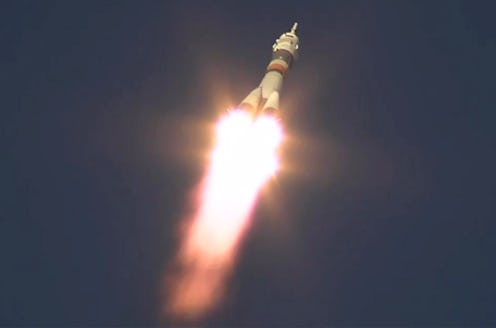News
Katherine Johnson Is An Historic Woman In Science
During his State of the Union Address, President Obama gave a shout-out to American inventors and innovators who changed the course of the country. In addition to Thomas Edison, the Wright Brothers, and George Washington Carver, Obama mentioned several prominent American women, including Katherine Johnson. That's not exactly a household name, though, at least not to the extent that Edison and the Wright Brothers are. So, who is Katherine Johnson?
Johnson is a towering figure in the history of space travel, a science pioneer for both women and African Americans. A former NASA scientist, she made tremendous contributions to America's first forays into space on several different fronts. It was Johnson who figured out the trajectories for America's first manned space flights, for example. thanks to her work, NASA was able to track the location of astronaut Alan Shepard during his 1961 voyage, and a year later, she helped build a system that allowed the administration to predict, within two miles, where John Glenn's rocket would be after it finished orbiting Earth.
These are noteworthy contributions on their own, but Johnson has a place in history that extends beyond just her scientific accomplishments. She joined NASA in 1953, a time at which women attempting to build a career in STEM fields had a hard time getting a fair shake. Johnson changed that.
As NASA notes, she bucked expectations shortly after arriving at the agency by asking questions of her colleagues — back then, women at NASA simply didn't do that. After noticing that female employees were never present at meetings or briefings, she asked her superiors if it was illegal for women to participate. When informed that it wasn't, she gave herself a seat at a table, in the most literal sense, where women hadn't sat before. It's probably not a surprise that Johnson was the first woman at NASA to have her name printed on a research paper.
"The women [at NASA] did what they were told to do," Johnson explained in an interview with NASA. "They didn't ask questions or take the task any further. I asked questions; I wanted to know why. They got used to me asking questions and being the only woman there."
Johnson wasn't just a scientist who made historic and invaluable contributions to human exploration of space, although she certainly was that. She also played a major role in opening up NASA, obviously one of the premiere scientific institutions on the planet, to women. That's partly why Obama gave her the Presidential Medal of Freedom in 2015, so it's no wonder Obama gave her a special mention during the State of the Union.
